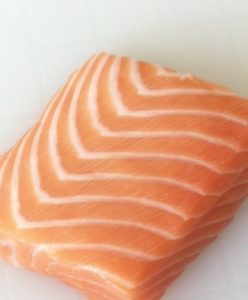 It is hard to say where it is best to buy fish for sushi. I will only buy fish at fishmongers in Copenhagen.
It is hard to say where it is best to buy fish for sushi. I will only buy fish at fishmongers in Copenhagen.
There are some basic things to look for in a fishmonger.
Fish for sushi should never be placed with other fish. Fish for sushi has a completely different quality than”ordinary” fish for cooking. To ensure that bacteria are not transferred between the 2 types of fish they must be kept separate.
Fish for sushi should be perfectly fresh. On the sushi course for beginners, I talk about what to look for if you want to make sure you leave the fishmonger with fresh fish.
Read more about the Sushi course for beginners
_
Zoë has held sushi courses and cooking classes for A. P. Moller – Maersk, Hugo Boss Nordic, Novo Nordisk, Novartis, Velux, Gorrissen Federspiel, Beierholm revision, Elbek & Vejrup and many more.






